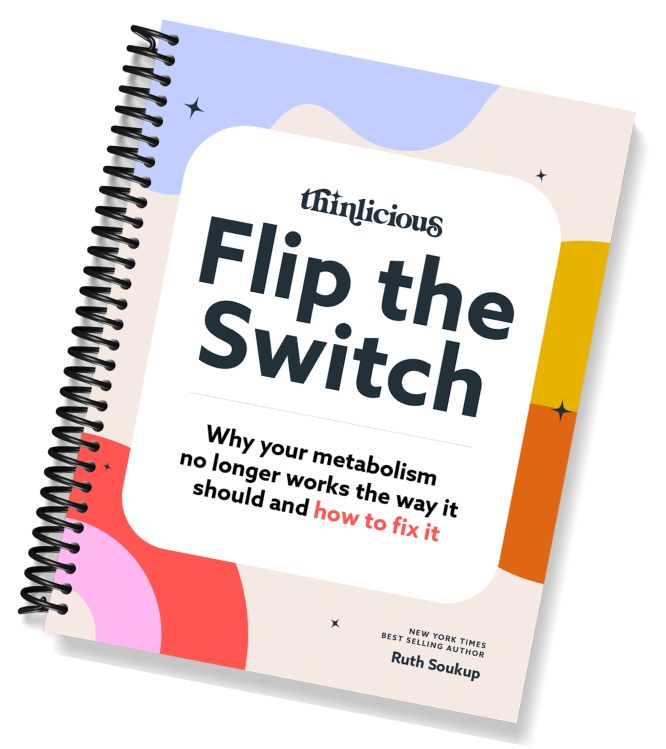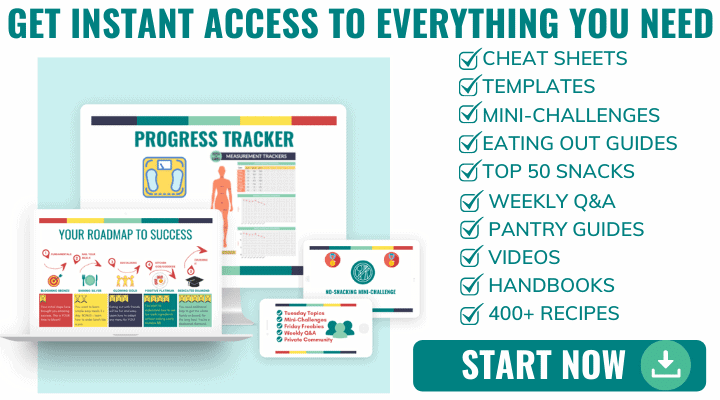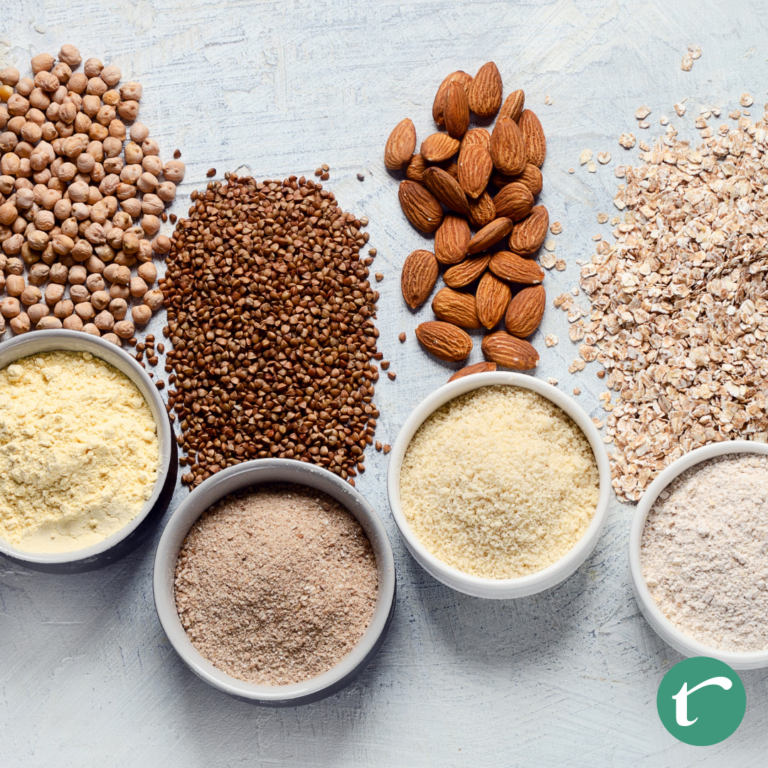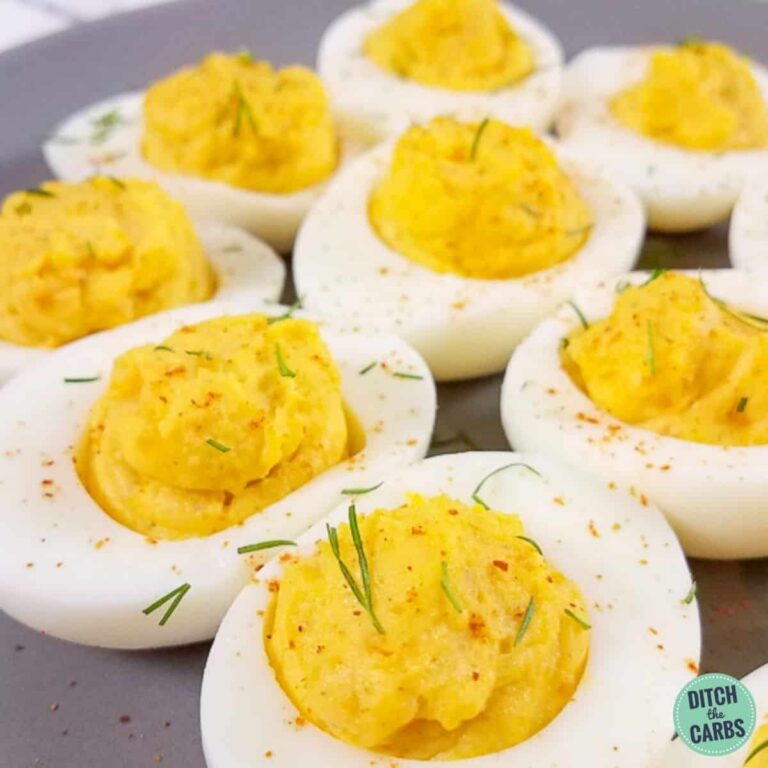Are you thinking of starting low-carb or keto diets? These methods have become more popular and could deliver impressive weight loss results—if you employ the right approach.
With that in mind, let’s look at the top three keto mistakes and what you can do to avoid them.
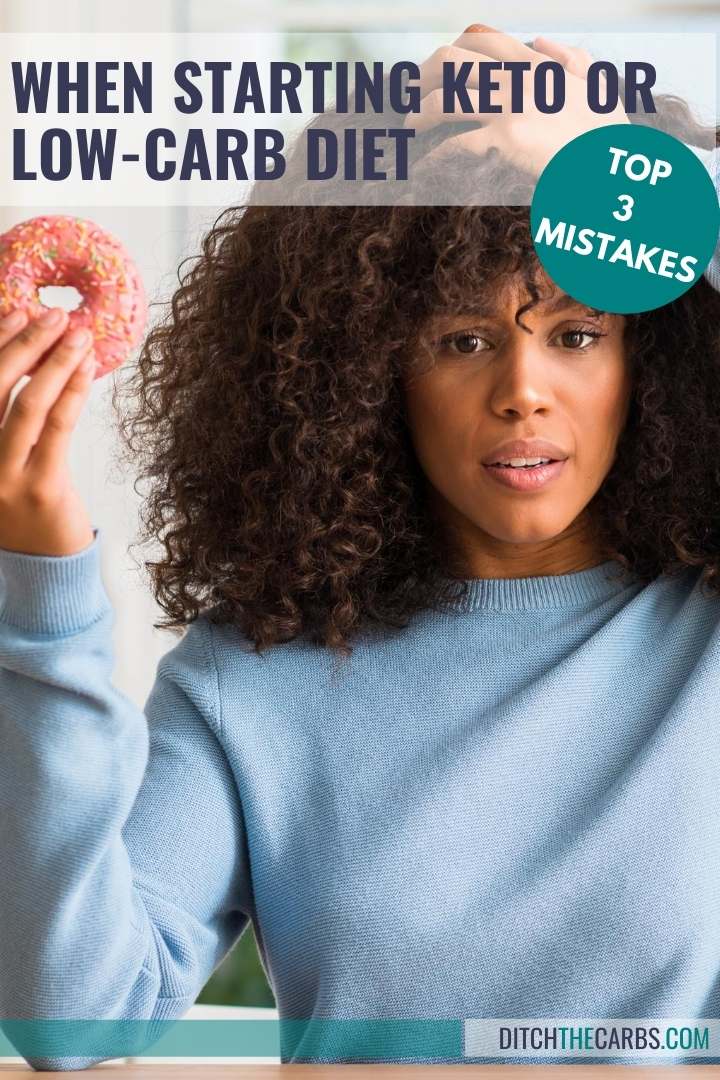
Top 3 Mistakes When Starting Low-Carb and Keto Diets
It can be challenging for many of us to ditch the carbs, especially when we’re just starting out on our journey to optimal weight loss and healthy eating.
You will probably be confused and ask yourself:
Are you ready to create the ultimate 12-month blueprint for reaching your health & weight loss goals this coming year?

Our free on-demand video training will walk you through how to make 2024 THE year you set health goals…and keep them.
- What do you eat on a low carb diet?
- How much should you eat?
- How often should you eat?
- What are the benefits?
- Is keto safe?
What are the Benefits of Going Low-Carb?
Everyone is busy, but it’s still very realistic to stay low carb. If you minimize your carb intake, you’re likely to experience the following benefits:
Promotes optimal blood sugar and insulin levels
Carbohydrates play a significant role in how our bodies regulate blood sugar. High blood sugar and insulin levels are leading causes of various chronic ailments, including Type 2 diabetes, hypertension, and cancer. By reducing our carb intake, our bodies can better control blood sugar and minimize insulin levels.
Promotes healthy eating habits
Starting a low-carb diet can help control food cravings, which is essential to weight loss. Try it out and see for yourself.
Promotes heart health
Low-carb diets help lower the risk factors for various cardiovascular diseases. They can increase ‘good’ cholesterol levels and promote fat loss, both of which are essential to heart health.
Promotes weight loss
Diets that are high in carbohydrates can lead to insulin resistance and weight gain. If you’ve been looking to shed a few pounds, then lowering your carb intake is a good place to start.
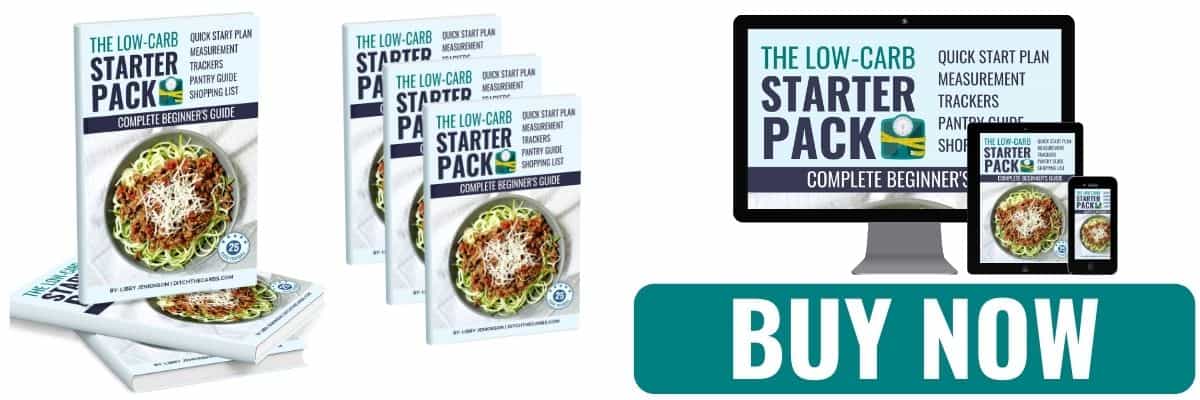
What Types of Food Can You Eat on a Low-Carb Diet?
If you’re just starting low-carb, you’re probably wondering what types of food you can eat and what to avoid. Well, as the name suggests, this diet focuses on foods that are low in carbohydrates and high in healthy oils and fats. Quality protein also forms part of the mix, though often in moderate quantities.
- Meat (can contain fat)
- Seafood with high omega 3 levels such as salmon, tuna, and prawns
- Vegetables such as spinach, cauliflower, broccoli, and mushrooms
- Full-fat cheese
- Full-fat cream/milk
- Eggs
- Low-sugar fruits, such as berries, lemons, avocados, and limes
- Nuts and seeds
If you’re wondering how to start a keto diet, don’t worry—anyone can do it! Making the switch to low-carb foods may seem daunting at first, but remember it’s about progress, not perfection.
Start simple and gradually swap out your high-carb foods for healthy low-carb foods. Over time, you’ll adjust and start to include more low-carb foods in your daily meals. When you start to reap the benefits of starting low-carb, you’ll wonder why you didn’t limit your carb intake sooner.
What are the 3 Most Common Mistakes When Starting Low-Carb Or Keto Diets?
1. Not tracking what you eat
Tracking what you eat can be tedious, but it is an essential part of the keto process, especially at the beginning. If you’re not tracking what you eat, then you don’t know how much carbs you’re consuming and from where they’re coming. More importantly, you won’t have a baseline through which you can measure your progress.
How to fix this mistake
Track everything you consume, from the coffee you drink at the start of the day to the after-dinner dessert. There are apps available for download on your smartphone that can help with tracking; feel free to explore which one works best for you.
I like cronometer.com which is accurate and reliable. You can sign up for the free version and track your carbs, fat, protein, nutrients, vitamins and even salts and minerals.
You can also do it the old-fashioned way by writing down what you’re eating and its carb value. If you’re not sure about the carb value of a particular food, simply Google it.
Alternatively, you can take photos of your food (not necessarily for Instagram) to keep track of what you had over a given period. The important thing is that you track the carbs you’re eating and gradually lower the amount.
2. Setting the wrong macros
There are three levels of macros that you should set when starting low-carb. You may wish to use a macro calculator to set yourself some goals and limits.
- Moderate low carb – under 100 grams of net carbs per day (moderate carb)
- Low carb – under 50 grams of net carbs per day (low carb)
- Keto – under 20 grams of net carbs per day (keto)
It’s important to track to know which level you currently prefer. Some people set their macros too high and end up not seeing any noticeable results, while others set it too low and cannot keep up with the diet.
How to fix this mistake
Take a slow and steady approach when starting with low-carb diets. If you were previously on a high-carb diet, don’t jump straight to keto. Instead, start with a moderately low carb diet and maintain it until you can consistently limit your carb consumption to below 100 grams a day.
Afterwards, you can move to low-carb (below 50g net carbs per day) and become more strict with your daily carb intake. When you have achieved expert control over your hunger cravings, then you can try out keto.
3. Eating too many snacks within the day
Excessive snacking defeats the purpose of starting the low-carb diet since munching on snacks all the time can interfere with your body’s natural glucose and insulin response. This can prevent your body from getting into fat-burning mode and set back all the progress you’ve made for that day.
How to fix this mistake
Whether it’s a low-carb or keto-friendly snack, avoid eating too many snacks in a day. In the beginning, it can be hard since you’re still learning how to control your appetite and anticipate your cravings.
With dedication, you’ll eventually learn to fight the urge to reach for a snack and instead stick within your ideal macro level. If you decide to have a snack, make sure it is one that won’t provide unnecessary carbohydrates or simple sugars such as a handful of nuts or vegetables.
Find out more about other common mistakes and how to avoid them.
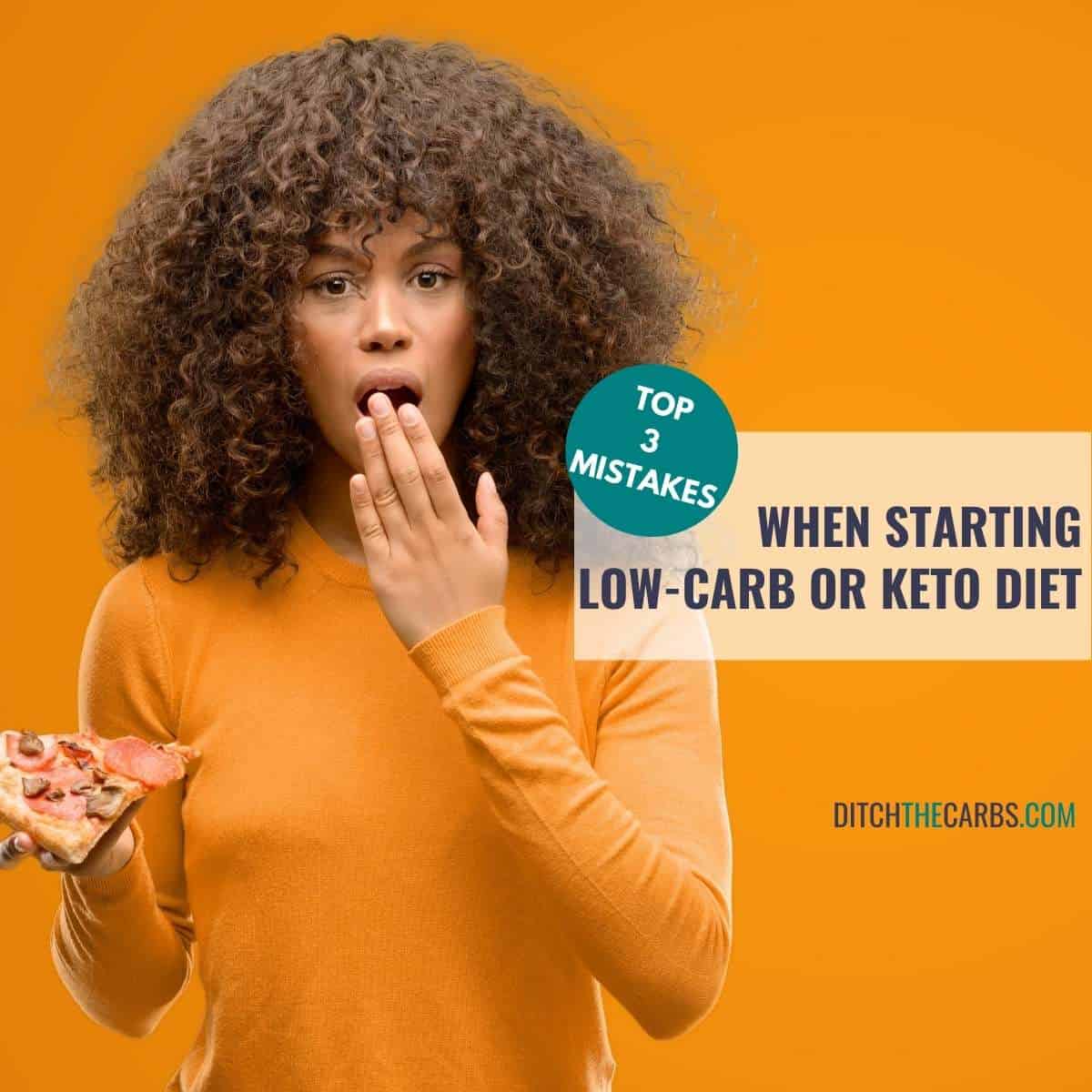
Conclusion
Starting a low-carb diet doesn’t have to be complicated. The important thing is to know what you’re getting into and how to set yourself up for success. Give yourself time to adjust, stay hydrated, and avoid the low-carb and keto mistakes outlined above.
If you are finding it tough to stay on track, these are the best 5 ways to stay on track with your keto lifestyle this year.
Learn how to test for ketones and this will teach you when you are falling in or out of nutritional ketosis.
If you’d like to learn more, check out our low-carb shop for the latest cookbooks and meal plans and specialised courses on starting a keto diet.
Get our FREE guide to finally fix your metabolism!
Losing weight & getting healthy is never easy, but lately you might feel like it’s suddenly become impossible.
Our Flip the Switch guide will help you clearly understand what’s been going on, as well as exactly what you can do to get your metabolism working again so that you can look and feel your best—it’s easier and more simple than you think!
